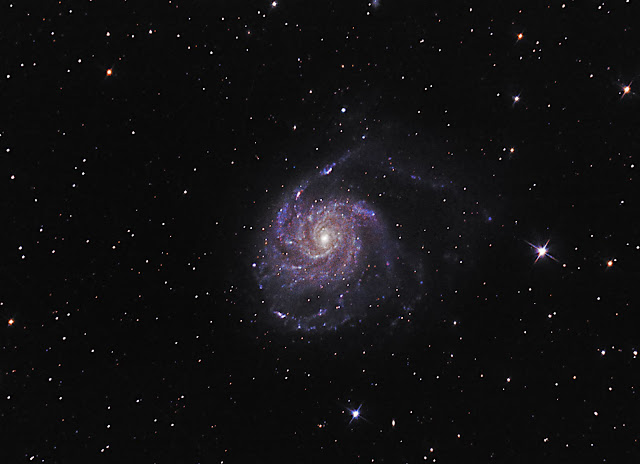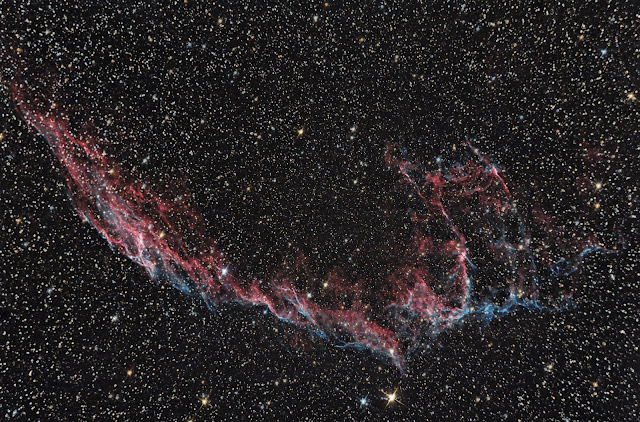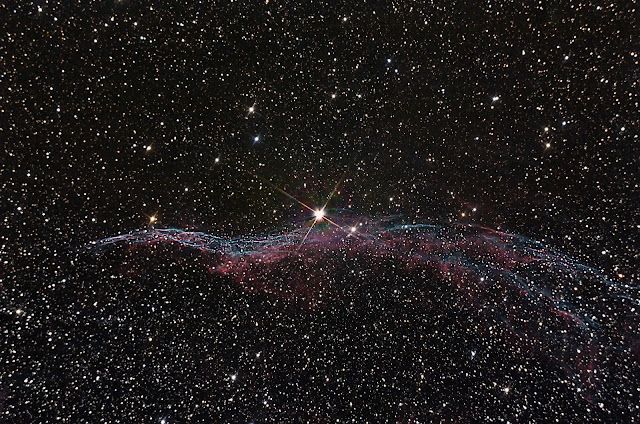Here are a couple of images that I took there.

This is the Trifid Nebula, M20 in Sagittarius. This was done with only 5 - 3 minute exposures at iso 1600.
The next was M101. This rather deep image consists of 8 - 5 minute exposures at iso 1600.... All of the images were taken with the Orion 8" f/4.9 scope.

Following M101, I decided to go over to the Veil Nebula. I have trouble getting decent shots from home, so I thought I'd do my best to get a few of the parts of it from Cherry Springs. Did pretty well with these. The first is the Network Nebula portion. 16 exposures over 2 days. All are 5 minute exposures at iso 1600. You will see an odd thing with the stars. The stars in the center are tiny, and get a little larger the farther from the center you go. This is a problem with imaging with a short Newtonian. A coma corrector will fix that, and will be buying one as soon as I get back home.

Last but not least, here is the "Witches Broom" portion of the Veil, NGC6960. 18 - 5 min exposures, iso 1600. It intresting to note, the highest iso I can use from home at 5 minutes is iso 400, which makes the camera 4 times more sensitive, and the background brightness is much darker in the higher sensitivity images.









